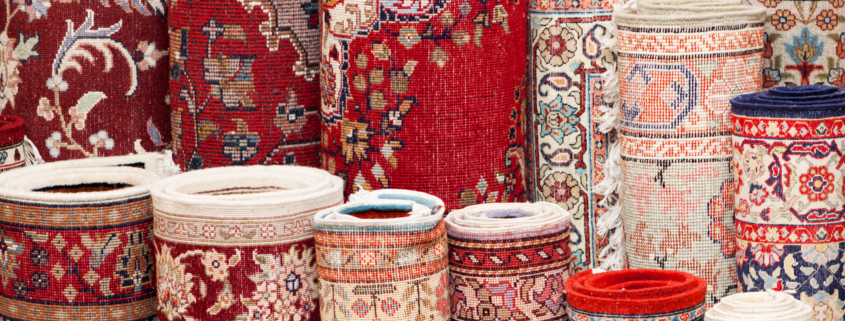Restoring Oriental Rugs in Ocala: Preserving Timeless Beauty
Oriental rugs are more than just floor coverings; they are intricate works of art that often carry deep cultural significance and personal value. Whether passed down through generations or acquired as an investment, these rugs can enhance the beauty of any space. However, over time, wear and tear, environmental factors, and accidental damage can take a toll on these treasured pieces. In Ocala, where the appreciation for art and craftsmanship runs deep, Oriental rug restoration plays a crucial role in preserving the beauty and functionality of these rugs. Here’s a look at the importance and process of Oriental rug restoration in Ocala.
1. The Importance of Restoration
Restoration of Oriental rugs is essential for several reasons:
Preservation of Value: Oriental rugs, especially antique ones, can be quite valuable. Restoration helps maintain or even increase the value of the rug by repairing damage and preventing further deterioration.
Aesthetic Appeal: Over time, colors can fade, and the intricate patterns of the rug can become obscured by dirt, stains, or wear. Restoration revitalizes the rug’s appearance, bringing back its vibrant colors and intricate designs.
Emotional and Cultural Significance: Many Oriental rugs carry sentimental value, having been passed down through generations or purchased as meaningful investments. Restoration helps preserve these emotional connections by keeping the rug in good condition for future generations.
Longevity: Regular maintenance and timely restoration can significantly extend the life of an Oriental rug, ensuring that it continues to adorn your home for many years to come.
2. Common Issues Requiring Restoration
Several common issues can arise with Oriental rugs, especially in a place like Ocala, where the climate and lifestyle can present unique challenges.
Frayed Edges and Worn Fringes: The edges of an Oriental rug are often the first areas to show signs of wear. Frayed edges and worn fringes not only detract from the rug’s appearance but can also lead to more severe damage if left untreated.
Color Fading: Exposure to sunlight and harsh cleaning products can cause the colors of an Oriental rug to fade over time. Restoration can often restore much of the original vibrancy.
Holes and Tears: Heavy foot traffic, pet damage, or accidents can cause holes and tears in the rug. Professional restoration involves reweaving the damaged sections to match the original pattern and design.
Moth Damage: In Ocala’s warm climate, moths can be a significant concern. Moth larvae feed on the natural fibers in Oriental rugs, causing bald spots and thinning. Restoration can involve treating the rug to remove pests and reweaving the damaged areas.
Water Damage: Florida’s humid climate and occasional storms can lead to water damage in rugs, causing mold, mildew, and rot. Restoration can address these issues by thoroughly cleaning the rug and repairing any structural damage.
3. The Restoration Process
Restoring an Oriental rug is a delicate process that requires expertise, patience, and attention to detail. In Ocala, there are skilled professionals who specialize in this intricate work.
Assessment: The first step in the restoration process is a thorough assessment of the rug’s condition. This includes identifying the type of fibers, dyes, and weave used, as well as assessing the extent of the damage.
Cleaning: Before any repairs can be made, the rug must be cleaned to remove dirt, dust, and stains. This is typically done using gentle, eco-friendly cleaning solutions that are safe for delicate fibers and natural dyes.
Repairing Fringes and Edges: The edges and fringes of the rug are often reinforced or re-knotted to prevent further unraveling. This process requires a skilled hand to ensure that the repair matches the original craftsmanship.
Reweaving and Patching: For holes, tears, or areas of significant wear, skilled artisans reweave the damaged sections using fibers and dyes that match the original as closely as possible. This can involve reconstructing intricate patterns and designs by hand.
Color Restoration: If the rug has faded, color restoration techniques may be used to bring back its original hues. This process is delicate, as it involves carefully re-dyeing the fibers to achieve a uniform color that blends seamlessly with the rest of the rug.
Blocking and Stretching: After repairs are completed, the rug may be blocked and stretched to restore its original shape and alignment. This helps to ensure that the rug lies flat and looks as it did when it was first made.
4. Choosing a Restoration Professional in Ocala
Selecting the right professional for your Oriental rug restoration is crucial to achieving the best results. Here are some tips for choosing a restoration expert in Ocala:
Experience and Expertise: Look for a restorer with extensive experience in working with Oriental rugs. The best restorers often have years of experience and a deep understanding of different types of rugs and their specific restoration needs.
Portfolio and References: Ask to see a portfolio of previous restoration projects or request references from past clients. This can give you a sense of the quality of work and the restorer’s attention to detail.
Restoration Techniques: Inquire about the specific techniques and materials that will be used in the restoration process. Ensure that the restorer uses methods that are safe for your particular rug, especially if it is an antique or made from delicate materials.
Customer Service: Good communication is key to a successful restoration project. Choose a restorer who is responsive, willing to answer your questions, and keeps you informed throughout the process.







